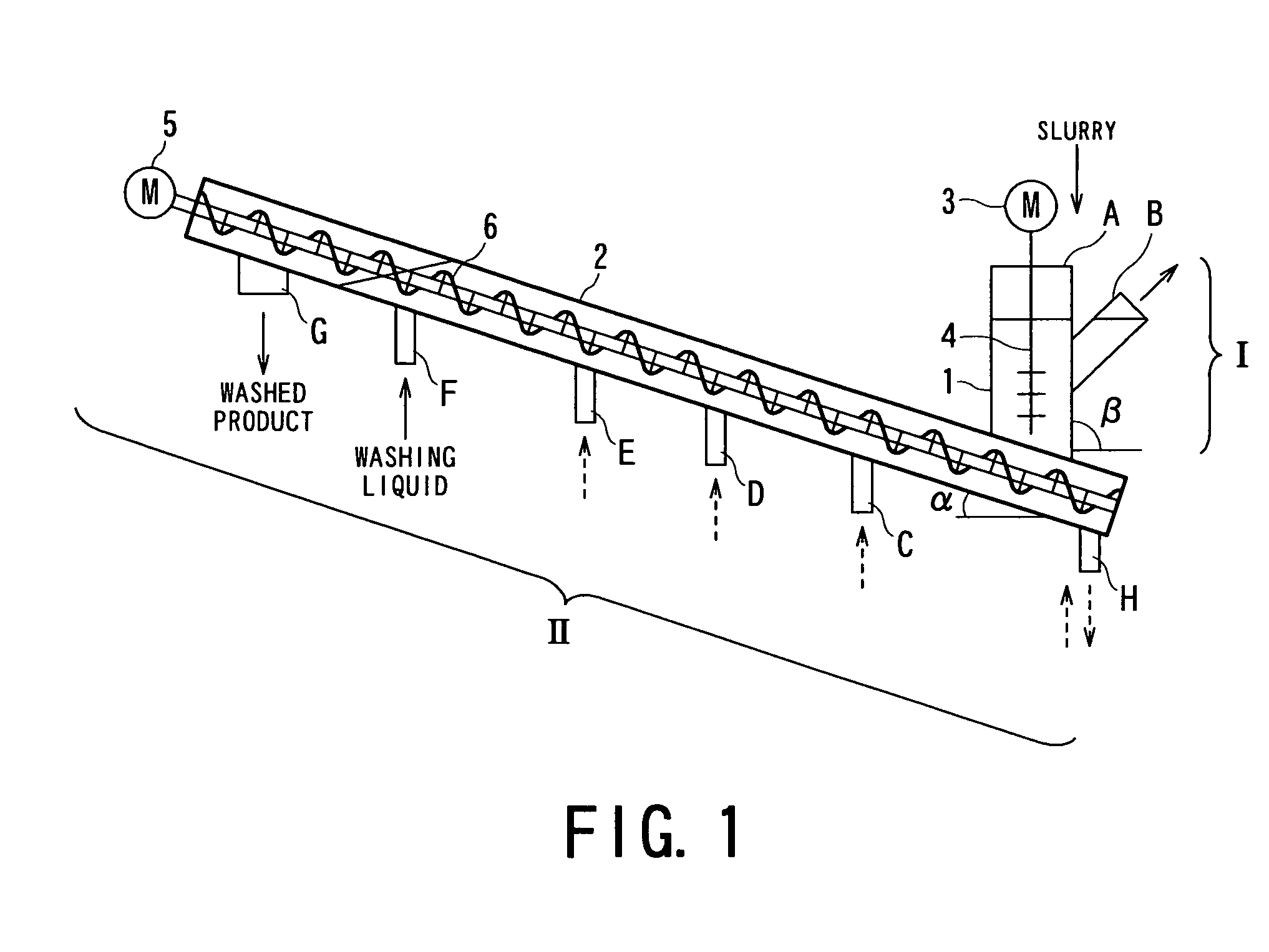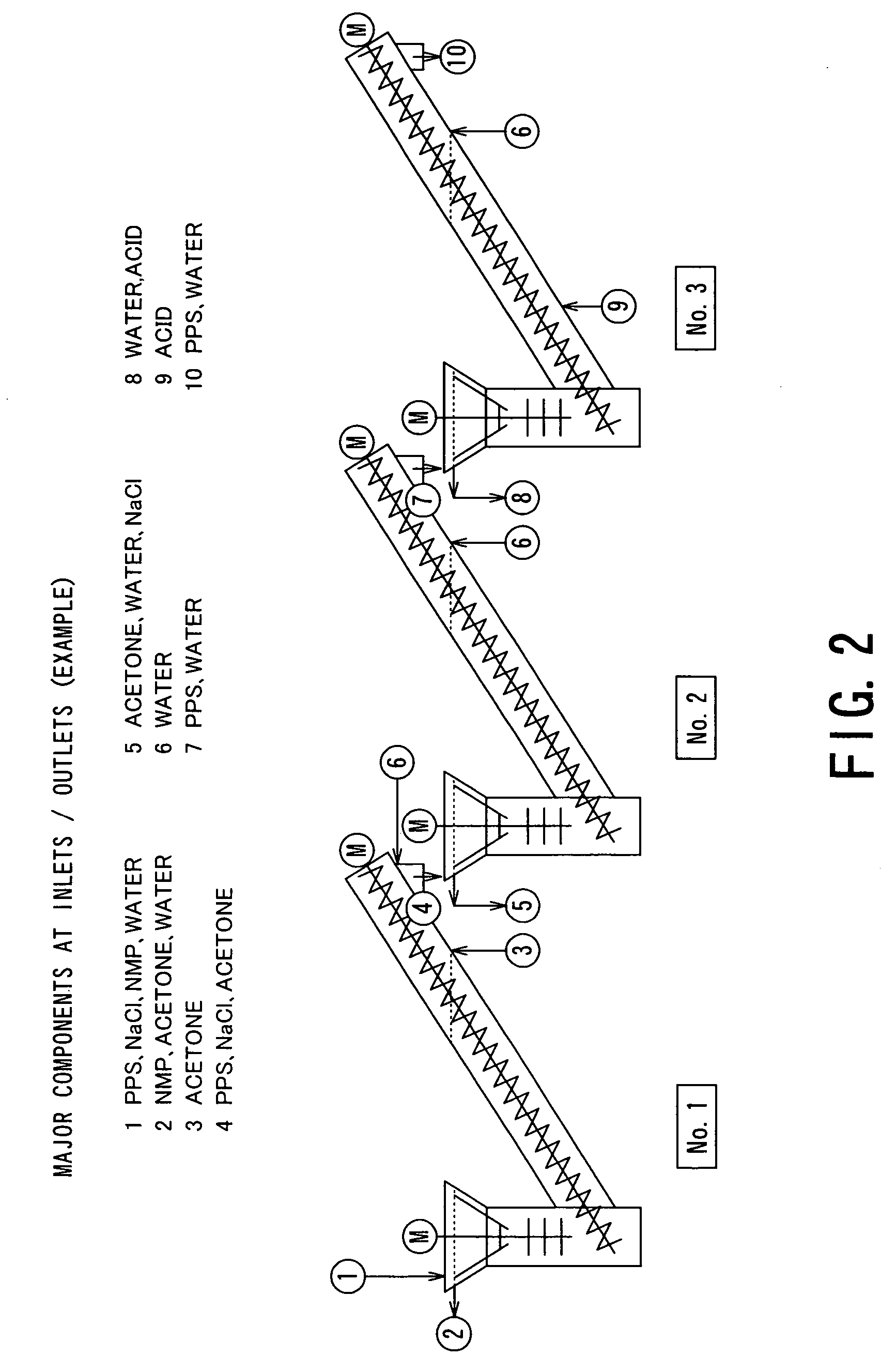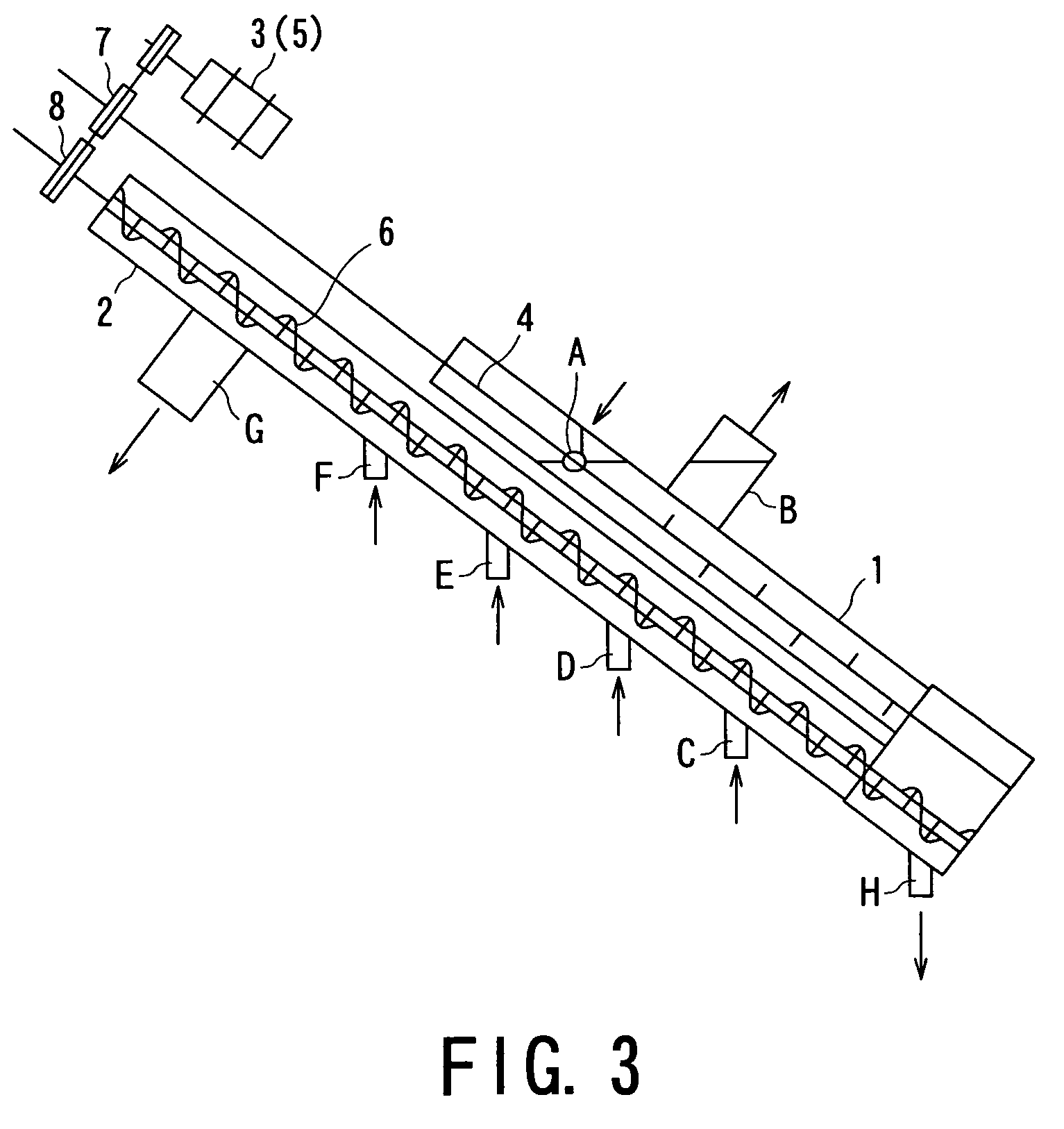Method of continuously cleansing polyarylene sulfide
a polyarylene sulfide and continuous cleaning technology, applied in the field of slurry treatment, can solve the problems of poor production efficiency of powdery resin, difficult handling, scattered dust in dry powdery resin, etc., and achieve the effects of reducing the loss of pas fine particles, efficient removal, and efficient recovery of costly polar organic solvents
- Summary
- Abstract
- Description
- Claims
- Application Information
AI Technical Summary
Benefits of technology
Problems solved by technology
Method used
Image
Examples
first embodiment
[0036]In a most basic embodiment using an apparatus of FIG. 1 placed in an open atmospheric pressure system, a polymerizate slurry is supplied from the supply port A and water is supplied as a washing liquid from the principal washing liquid-supply port F, whereby washed PAS particles are discharged out of the discharge port G, and an aqueous waste fluid containing NMP, dissolved NaCl, dissolved phenylene sulfide oligomer and paradichlorobenzene, is discharged out of the discharge port B.
[0037]More specifically, solid matter principally comprising PAS particles, crystalline NaCl, etc., in the PAS polymerizate slurry supplied from the supply port A, is caused to flow down or descend preferably under mild stirring by means of stirring blades 4 through the downward tube 1 to reach the bottom of the tube 1, from which the solid matter is scooped up by a screw 6 rotated in the upward tube 2 while it is caused to countercurrently contact water supplied from the supply port F and the accom...
second embodiment
[0039]In a further preferred embodiment of the present invention, two units of the washing apparatus shown in FIG. 1 are disposed in series, and the polymerizate slurry is subjected to a two-stage washing process.
[0040]More specifically, in a first washing unit, similarly as in the above-embodiment, the polymerizate slurry is supplied from the port A, and from the port F is supplied a washing liquid comprising a polar organic solvent (e.g., acetone or methanol, hereinafter represented by acetone) which is miscible with water and the polar organic solvent (hereinafter represented by NMP) in the polymerizate slurry and has a lower boiling point than water, whereby NMP is principally extracted and washed out from the particulate PAS (hereinafter represented by PPS) to discharge a wet cake of PPS particles accompanied with the crystalline alkali metal salt(hereinafter represented by NaCl) out of the port G. On the other hand, from the port B is discharged a washing waste fluid principal...
third embodiment
[0043]In a further preferred embodiment, a third washing unit also having a structure substantially similar as the one shown in FIG. 1, is used to treat with an acid the wet cake of PPS particles discharged out of the port G of the second washing unit in Second embodiment described above. The acid treatment is effective for increasing crystallization temperature and crystallization speed as preferable features of product PPS particles as described in JP-A62-48728 and JP-A7-118389.
[0044]More specifically, in this embodiment, with reference to FIG. 1 again, the wet cake of PPS particles discharged out of the port G of the second washing unit is supplied from the port A of the third washing unit. On the other hand, from a port C of the third washing unit is supplied a solution of an acid (e.g., an inorganic acid, such as hydrochloric acid, sulfuric acid or phosphoric acid; a salt of strong acid and weak base, such as ammonium chloride; or an organic acid, such as acetic acid or formic ...
PUM
| Property | Measurement | Unit |
|---|---|---|
| particle sizes | aaaaa | aaaaa |
| particle size | aaaaa | aaaaa |
| particle size | aaaaa | aaaaa |
Abstract
Description
Claims
Application Information
 Login to View More
Login to View More - R&D
- Intellectual Property
- Life Sciences
- Materials
- Tech Scout
- Unparalleled Data Quality
- Higher Quality Content
- 60% Fewer Hallucinations
Browse by: Latest US Patents, China's latest patents, Technical Efficacy Thesaurus, Application Domain, Technology Topic, Popular Technical Reports.
© 2025 PatSnap. All rights reserved.Legal|Privacy policy|Modern Slavery Act Transparency Statement|Sitemap|About US| Contact US: help@patsnap.com



